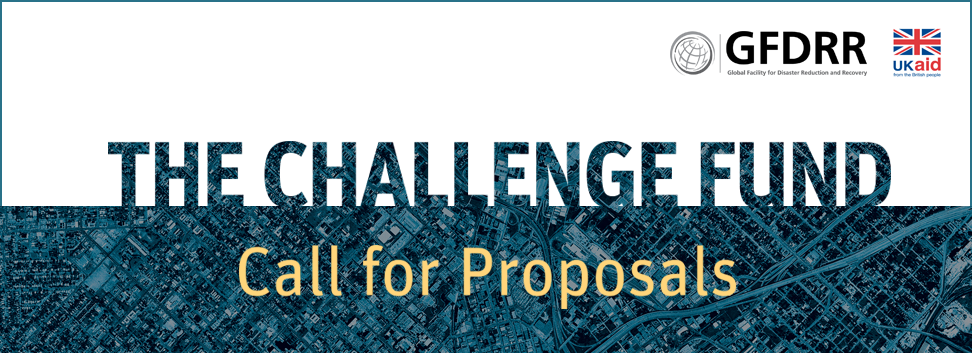
ABOUT THIS YEAR'S CHALLENGES
The challenges of this year’s Challenge Fund call are focused on high-impact activities that will promote the creation and use of risk-related data, in addition to better understanding the needs of end users, as per the recommendations of the report: Solving the Puzzle: Innovating to Reduce Risk.
Below are the categories of the Challenge Fund. Click here to jump to judging criteria.
Challenge 1: Hazard Scenario Dataset
Deliver a suite of event scenarios for a variety of perils generated from parametric or numeric model runs. The scenarios should encompass hypothetical and/or historical representative events that could occur with high, medium and low frequency. In addition, the set could also include return period information that would be useable with ThinkHazard! Outputs will be licensed as open data and formatted using open standards for easy integration on open platforms. To push innovation, the hazard scenario dataset should include one or more complex hazards, for example: storm surge, drought, city-level flooding, tsunami, etc.
Challenge 2: Global Open Exposure Data Repository Framework
Develop a framework for an open global exposure dataset, with defined standards, that could be hosted by an open online platform. The prototype would be able to handle site-specific structural information, as well as aggregated socio-economic and structural information. Exposure information on structures would include occupancy as well as construction attributes and should be able to be collected using a mobile app used in a community mapping project with the defined standards. The prototype framework should be able to integrate data from a variety of existing sources including OpenStreetMap, Global Earthquake Model (GEM), World Bank Group GDP data and others, and then offer the aggregated data in a form compatible with various platforms. The data standards should focus on the parameters that are most important for vulnerability and be extensible so they can accept more detailed attributes.
Challenge 3: Open Vulnerability Function Dataset
Develop an open database of vulnerability functions for a variety of exposures (e.g., structures, social vulnerability, population and GDP), spatial resolutions (admin level or postal code), and hazards. The vulnerability functions should be designed to expect a variable number of attributes from the Global Exposure Dataset prototype developed under the Challenge Fund (see Challenge #2). The structural vulnerability functions should be able to handle situations where essentially no information is available as a well as cases where there are more detailed attribution data.
Challenge 4: Understanding User Needs
In order to develop the right tools to understand risk, there needs to be a greater understanding of the end user needs. An in-depth understanding of the challenges of accessing, using and understanding risk information will be explored in two pilot countries. In addition, realistic scenarios for decision-making using risk information will be provided. The final product will be an identification of: who are the different stakeholders, what information do they require, how can suppliers of disaster risk information better communicate it to end-users, and how this data could be used.
- Proposals must meet the World Bank eligibility requirements.
-
Proposals for all challenges must demonstrate how their project(s) can be piloted locally in two countries and scaled regionally to demonstrate the potential to be applied at a global scale.The first pilot country of choice for all projects is Tanzania. Proposers for Challenges #1-3 should be able to demonstrate: (i) country engagement and use of local datasets; and (ii) how the approach / framework can be scaled in up to five countries in the region, applying globally available datasets (such as Kenya, Malawi, Mozambique, Uganda, Zambia and Zimbabwe).As a result of multiple inquiries on the preference of the second pilot country and region, we have identified a high preference for the following countries: Afghanistan, Bangladesh, Burma, India, Kyrgyzstan, Nepal, Pakistan and Tajikistan in Asia. Proposals that can identify good country engagement in one of the above listed countries, as well as ability to scale to up to five countries in the region will be highly rated.
GRANT FUNDING
Challenges 1-3
Funding available for projects can be up to USD 200,000.
Challenge 4
Funding available for project can be up to USD 100,000.
